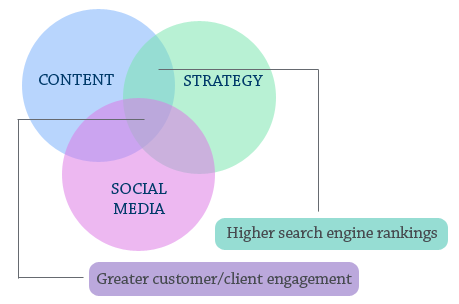Location data is normally used for location-based marketing.
But it can also be used for effective content writing.
Location data is the geospatial information of your average customer or client.
It may not give you the precise location of the customer because that would be a violation of her privacy, but it gives you enough information to know where the person lives, and sometimes, where the person goes for shopping.
Although content writing based on location data may be a new concept, business places and marketers have been using such information for centuries.
Take for example a conventional shop.
The shop owner often becomes chatty with the customers.
She becomes familiar with their likes and dislikes.
Based on this information, she suggests merchandise the customer would prefer.
In the age of the Internet, the same data has become “big data” and organizations use it to draw unparalleled insights for targeted marketing.
Customising and aligning content writing with customer location data
Most of the businesses want to target their customers at a personal level, preferably based on their physical location.
Customized content can be broadcast to customers based on the region, the major events taking place in the region, their proximity to a landmark and even their buying decisions based on where they live.
Content can be written across the entire customer life cycle right from discovery, till the purchase, and even beyond that.
This helps in long-term engagement and retention.
Listed below are a few ways you can use targeted content writing using location data.
Targeted email campaigns
People may subscribe to your mailing list from all over the world.
As you regularly use a mailing service like MailChimp, you begin to gather data about their demography.
Suppose, you have subscribers from different countries like India, America, Canada, and Australia.
The Independence Day (15th of August) celebrated in India is different from the Independence Day (4th of July) celebrated in America.
There is no use sending an email for Independence Day greetings to all the countries.
Through segmentation, you can write content exclusively for people in India, or people in America.
Similarly, Black Friday sales happen in America and in a country like Australia, people may not even know the concept of a Friday being black.
Therefore, you can write an email campaign on Black Friday sales exclusively for your American subscribers.
Content on local events
Writing content on local events can generate immediate traffic.
For example, people in Gujarat celebrate the festival called “Garba” where, usually, young couples dance with each other.
A lot of interest is generated during this festival and people are looking for Garba-related content.
If you write content on such a local event, it generates immediate traffic for your website or blog.
Not just website or blog, even if you have a shop or a restaurant, your content writing can generate buzz and get you search engine traffic, that in turn, can drive foot traffic to your shop or restaurant.
Location-based content writing helps you target customers at a granular, personal level.
The content is written based on their physical location.
The focus points can be their proximity to a business center, or a major event (like a World Cup) happening in the region.
Content can be written targeting their entire journey including discovery and purchase, to engagement and retention.
What is the biggest example of location-based marketing that you encounter in your day-to-day life?
Google search.
When you search for “coffee shop near me” and you live in New Delhi, it is not going to show you a coffee shop in Manhattan.
It is going to show you different coffee shops, not just in New Delhi, but near you.
If you live in Lajpat Nagar, most of the coffee shops displayed in the search results are going to be from Lajpat Nagar.
Where does location data come from?
There are special apps that draw location data from mobile phones.
Different mobile apps ask their users to consent to share their location data.
This location data then is used in campaigns and notifications.
There are many third-party services that can provide you location-based data.
Most of the location-based data right now comes from mobile phones.
How to use location-based data in different forms of content writing?
You can write dedicated landing pages based on geo-targeting.
Targeted advertisements can be written.
You can write targeted content on social media websites, blogs and forums.
You can do mobile targeting by sending notifications that are relevant to some ongoing local event.
How deeply you use location-based data as a content writer depends on your access to the data.
If you are doing content writing for a client, then your client will be providing you the location data that you can then incorporate into your writing.
If you are writing for your own website, you will use different services such as Google Analytics or MailChimp to find information on where most of your visitors come from.
It isn’t necessary that you first get location data and then you write content based on that.
You can also target locations through content writing.
I have been writing content for an accounting client who is trying to target different countries for accounting outsourcing services.
We have written dedicated pages for different locations.
Location data is also used with within malls and shopping complexes.
Precise location of a person can be picked from the mobile phone and highly targeted SMS notification content can be beamed to the prospects.
As humans we care more about what’s happening around us, in our own neighbourhood, in our own locality.
Also, we like to read and hear about places we often visit.
We like local food.
We like local trends.
We want to read about what’s fashionable in our neighbourhood.
We want to update ourselves on what major events are happening in our locality.
In most of the cases we are proud of our hometown and hence, we want to read more stuff about it.
This need can be satisfied with location-based content writing.



